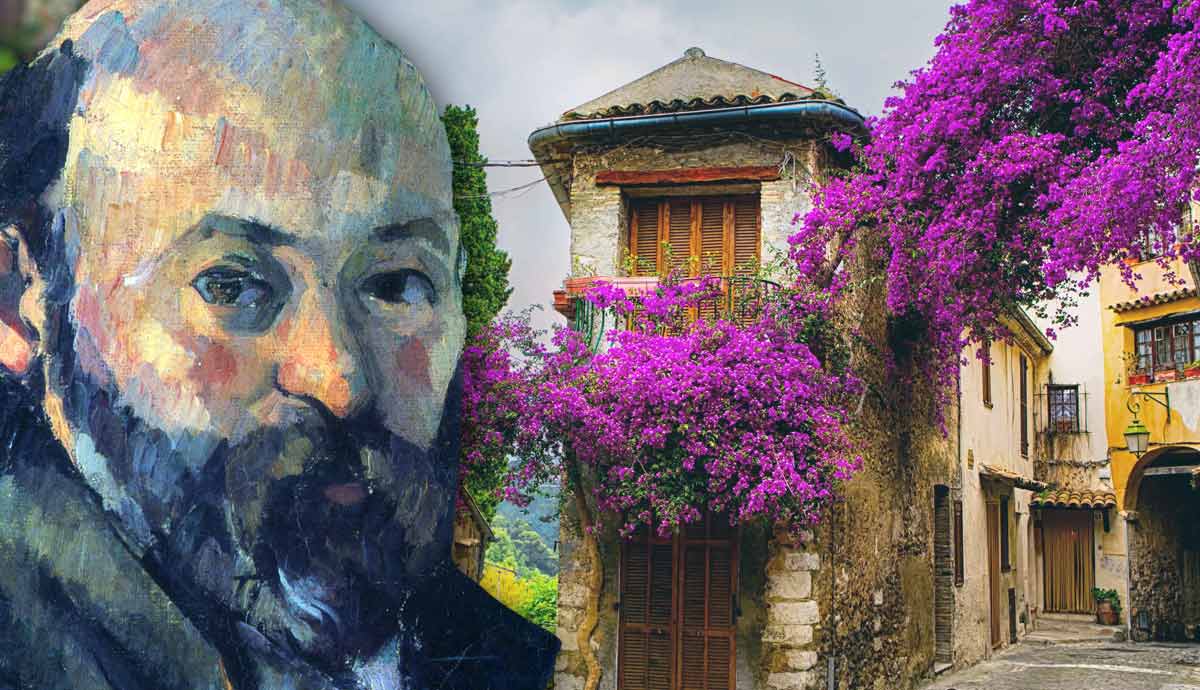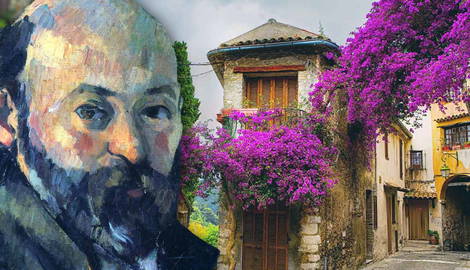
Widely known today as the ‘Father of Modern Art,’ Paul Cezanne was one of the most pioneering artists of the late 19th and early 20th century, whose radical approaches to color, form and spatiality helped pave the way for modernity and abstraction. Throughout his long life, the places where Cezanne lived had a marked impact on the nature of his art, none more so than his beloved Aix-en-Provence, which came to inform some of the most significant and monumental artworks of his entire career. From childhood to later years, we track the course of Cezanne’s life as he moved throughout France.
Childhood Years: Aix-en-Provence

Cezanne was born in 1839 in the small French town of Aix-en-Provence in the South of France, and he lived out his childhood here. Together with a group of intellectual friends who called themselves ‘the inseperables’ – including the soon-to-be famous writer Emile Zola – the adolescent Cezanne would while away long afternoons in the French countryside, basking in the hot weather and swimming in the nearby river. These early years in the artist’s life came to invest in him a deep love for the natural world, one that would stay with him for the rest of his life, and inform the nature of his mature, and most successful art.
Early Adult Years in Paris

In 1861, Cezanne moved to Paris, following Zola to the city of lights in search of success. Cezanne tried unsuccessfully several times to enter the prestigious and academic Ecole des Beaux-Arts, but the rejection did little to deter his passion to become an artist. While living in Paris, he taught himself to paint by copying the work of the great masters in the Louvre, including Titian, Michelangelo, Rubens, Courbet, and Delacroix. Cezanne’s art during this time was dark and somber, painted with thick, impasto passages of oil paint, echoing the paintings he encountered in the Louvre. He tried to emulate the somewhat traditional forms of painting favored by the Salon, yet his work was continuously rejected.

In Paris Cezanne also attended figure drawing classes at the Académie Suisse, where he first met the French Impressionist painters Claude Monet, Camille Pissarro, and Pierre-Auguste Renoir, whose radical approaches to painting en plein air – directly from nature, with light, sparkling colors and feathered brushstrokes had a profound impact on Cezanne, entirely altering his approach to making art.
L’Estaque

Cezanne moved to L’Estaque in the South of France, partly in order to escape being drafted into the military, and also to follow his close friend Pissarro, who had taken Cezanne under his wing. With Pissarro’s encouragement, Cezanne adopted a paler, brighter color palette, and a lighter touch, painting directly from the vibrant scenery in L’Estaque. During this time Cezanne first uncovered his fascination with strong, structural and architectural shapes of the local scenery, producing paintings that had a profound impact on the early Cubist work of Georges Braque.
Paris Again

A year later Cezanne returned to live in Paris, settling for some time with his mistress, Hortense Fiquet, and their son Paul. During this period of domestic stability Cezanne made more than 40 portraits of Hortense, along with a series of his son. In 1873, Cezanne took part in the Salon des Refuses, along with many of his fellow Impressionist painters, who had all had their avant-garde art rejected through the official Salon. The exhibition received harsh criticism from the press, and eventually Cezanne left Paris for good.
Later Years in Provence

When Cezanne’s father passed away in 1886, Cezanne inherited a portion of the family estate in Aix, where he eventually settled to live out the final decades of his life, away from the cultural hubbub of the city. He finally found recognition and success during these later years, but by now had become hermetic and isolated, entirely absorbed by his art. He worked on two of his most historically significant series’ towards the turn of the century, the famed Mont-Sainte-Victoire works depicting the mountain’s craggy outline shifting in the flickering patterns of nature, and The Large Bathers, depicting nude models intertwined with nature, painted on a vast scale.










